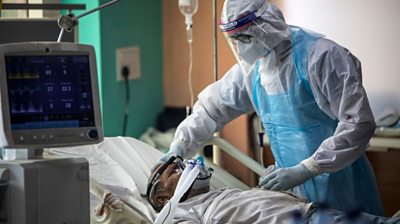Efforts to stop spread of COVID-19 should focus on preventing airborne transmission, experts say
Any future attempts to reduce the spread of covid-19 should be focused on tackling close airborne transmission of the virus which is considered to be the primary route for its circulation, according to experts in an editorial published in The BMJ.
Respiratory experts argue that it is now clear that covid-19 (SARS-CoV-2) is most likely to transmit between people at close range through inhalation rather than through contact with surfaces or longer range airborne routes, although those routes can also be responsible.
The covid-19 pandemic has helped to redefine airborne transmission of viruses, say the experts from the universities of Leicester, Edinburgh Napier and Hong Kong, Virginia Tech, and NHS Lanarkshire, Edinburgh.
There has been some confusion over precise definitions of air transmissions of infections from the last century in which the difference between “droplet” “airborne,” and “droplet nuclei” transmission have led to misunderstandings over the physical behaviour of these particles, they say.
What is important to know, they claim, is that if a person can inhale particles, regardless of their size or name, they are breathing in aerosols. And while this can happen at long range, it is more likely to happen when being close to someone because the aerosols between two people are much more concentrated at short range, similar to being close to someone who is smoking.
People infected with SARS-CoV-2 produce many small respiratory particles full of the virus as they exhale. Some of these will be inhaled almost immediately by those within a typical conversational “short range” distance of less than one metre, say the experts, while the remainder will disperse over longer distances to be inhaled by others further away — more than two metres.





